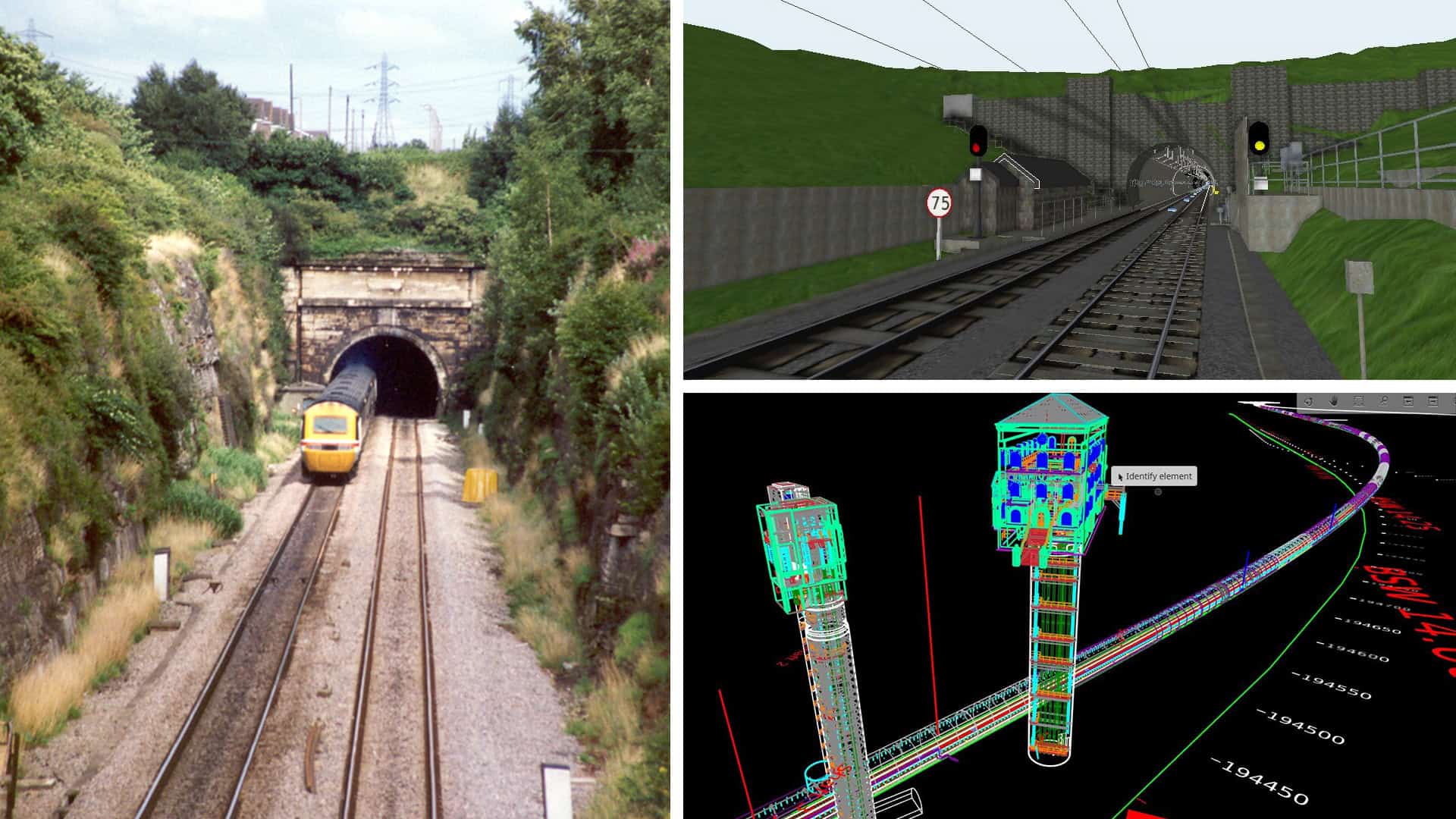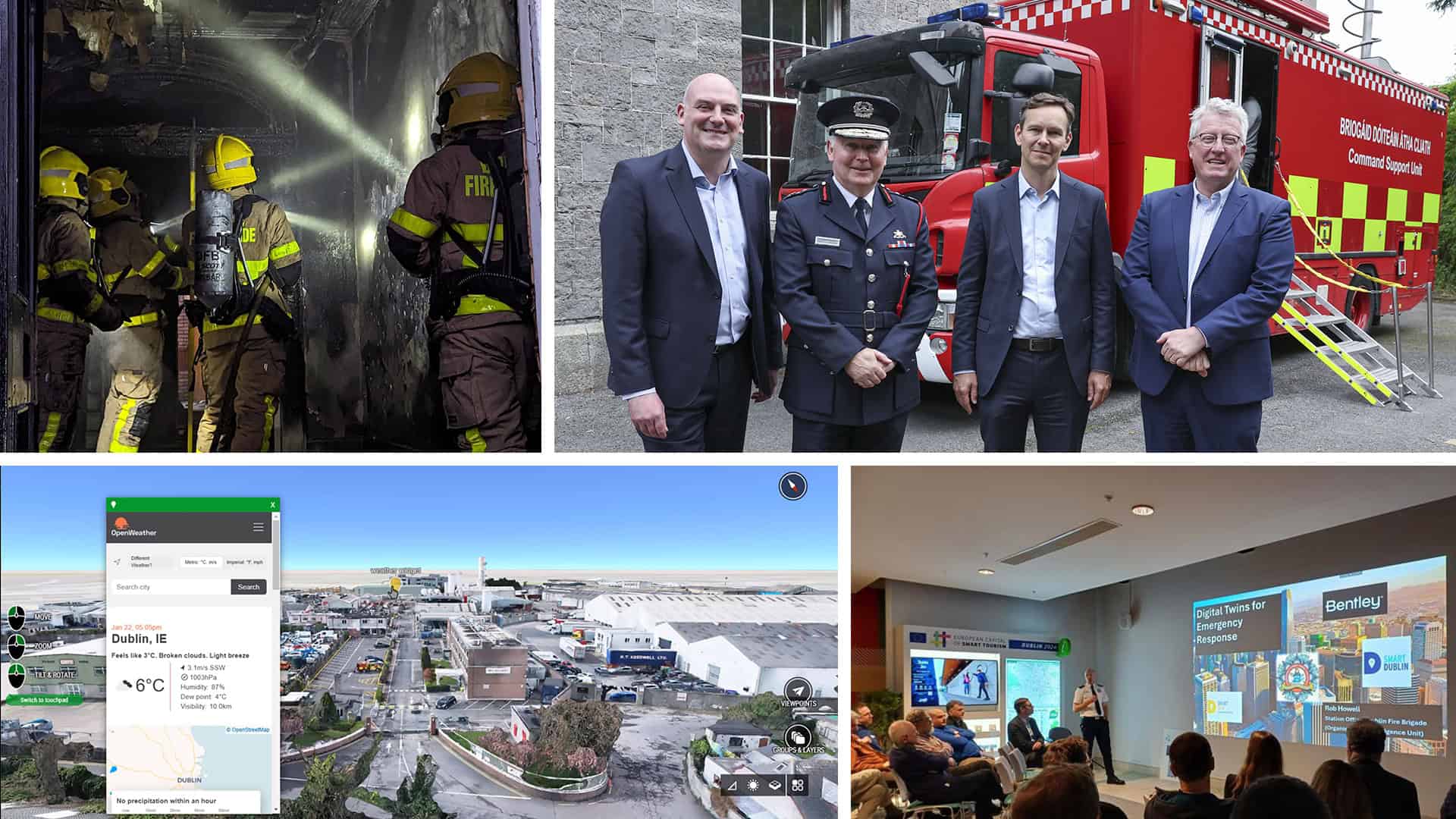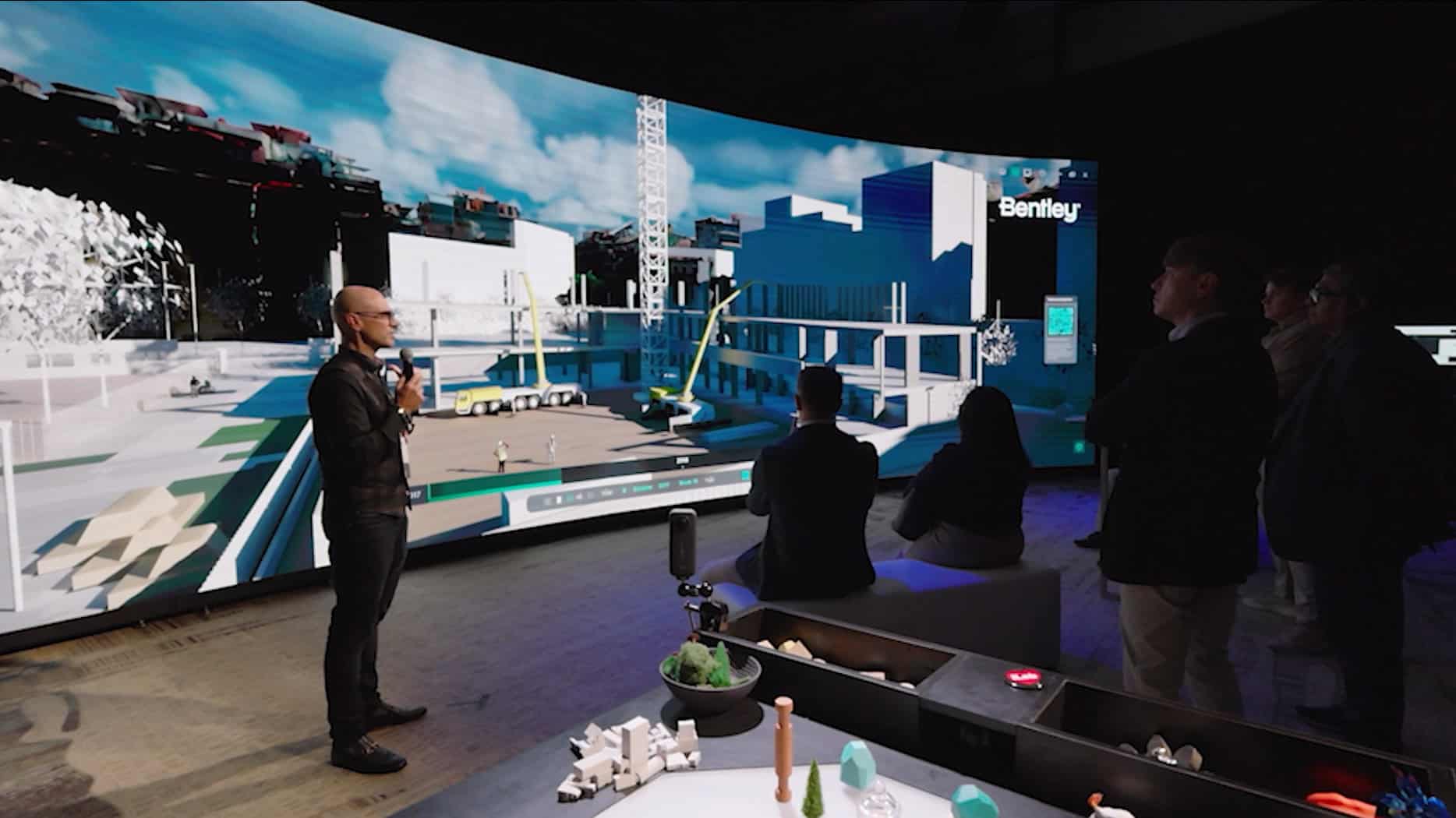Countries around the world are investing heavily in infrastructure to support economic growth, ensure energy security, and address climate change. Whether adapting existing infrastructure assets or building new ones, the task at hand is massive.
However, to meet these needs, the infrastructure community is facing a growing engineering resource capacity gap. Engineering firms have more work than they can handle. In the U.S., backlogs of orders can extend to a full year, according to a report by the American Council of Engineering Companies (ACEC).
The best way the infrastructure sector can increase capacity is by “going digital”, leveraging technology to improve efficiency and effectiveness.
At our 2023 Year in Infrastructure (YII) conference, where we celebrate the people and organizations advancing infrastructure around the world by going digital, we asked all the nominees for the Going Digital Awards to quantify their savings from digital advancements.
The results were staggering. Finalists reported a median savings of 18%. Now imagine the impact if all infrastructure projects could achieve such savings, and how this could help bridge the growing engineering resource capacity gap.
One of the objectives of our annual conference is precisely to share these impressive success stories and inspire every infrastructure organization to learn from them. And this year, we learned how the best infrastructure projects are leveraging data to improve project delivery and asset performance.
That is why Greg Bentley, our Board of Directors Executive Chair called 2023, “a groundbreaking year for infrastructure intelligence.”
Data is the Foundation of Infrastructure Intelligence
The finalists of the Going Digital Awards demonstrated how organizations can accelerate their infrastructure intelligence, by e.g., reusing digital components across projects, aligning subsurface data with engineering data, mobilizing data from one phase of the infrastructure lifecycle to the next, incorporating operational data from IoT sensors, drones, and more into evergreen digital twins.
For example:
- Mott MacDonald, winner of the Enterprise Engineering category, streamlined phosphorus removal schemes for seven water clients in the U.K. The company reused digital components across 100 projects, enabling repeatable design and construction, saving 13,600 hours and over GBP 3.7 million in costs.
- Arcadis, winner of the Subsurface Modeling and Analysis category, established a federated data model to centralize and visualize subsurface data, to support the design of a new pedestrian bridge in London’s Canary Wharf. This approach saved 30% of ground investigation scope and 12% of design costs and helped reduce embodied carbon. It also provides a basis for construction monitoring and proactive maintenance, minimizing environmental impact.
- Project Control Cubed LLC, winner of the Water & Wastewater category for Sacramento’s EchoWater project, used SYNCHRO to create a digital twin from 22 individual engineering projects and schedule the construction work on an active wastewater treatment plant, anticipating and mitigating potential obstacles and shutdowns. This allowed the project to be completed under budget by a whopping USD 400 million. The savings were reinvested into California’s Harvest Water program, providing recycled clean water to the agricultural industry.
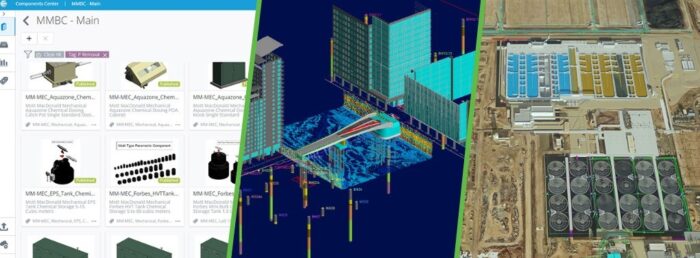 2023 Going Digital Award finalists demonstrate how organizations can accelerate their infrastructure intelligence. Images displayed from left to right courtesy of Mott MacDonald, Arcadis, & Project Controlled Cube LLC.
2023 Going Digital Award finalists demonstrate how organizations can accelerate their infrastructure intelligence. Images displayed from left to right courtesy of Mott MacDonald, Arcadis, & Project Controlled Cube LLC.Digital Twins are the Building Blocks
Although a considerable amount of data is created at each phase of the infrastructure lifecycle, very little is reused. In fact, we estimate that only five percent of engineering data is repurposed. Why? Because the data is siloed into different file formats and systems.
Digital twins are the key to unlocking this data, so that it can be queried, analyzed, reused, and aligned with other data – enabling better decision making, leading to better outcomes. If data is the foundation, digital twins are the building blocks of infrastructure intelligence.
We consistently track how many of the infrastructure projects nominated for the Going Digital Awards make use of iTwin, our digital twin platform.
In 2023, 35% of nominees and 64% of finalists credited iTwin for their success. The use of digital twin technology to leverage data to improve project delivery and asset performance – i.e., to accelerate infrastructure intelligence, is becoming mainstream, certainly among the best infrastructure projects.
Accelerating Infrastructure Intelligence
Last year at YII, we explained how we are evolving our product portfolio to leverage iTwin and help support data-centric workflows:
- We expanded the iTwin platform itself, with iTwin Capture, iTwin IoT, and iTwin Experience.
- We launched Bentley Infrastructure Cloud, including ProjectWise powered by iTwin.
- We introduced our first industry solutions Dam Monitoring and Bridge Monitoring, powered by iTwin.
This year, we demonstrated the impact of Bentley Infrastructure Cloud. Henry Okraglik, Global Director of Digital for WSP Australia, joined us to discuss how data-centricity is essential to the firm’s digital strategy. WSP won the 2023 Going Digital Award in the Bridges and Tunnels category for its project to eliminate 110 level crossings throughout metropolitan Melbourne by 2030. By using Bentley Infrastructure Cloud, in particular ProjectWise and SYNCHRO, WSP reduced modeling time by 60%, increased productivity by 25%, and reduced the carbon footprint by 30%.
We are also seeing significant momentum with our industry solutions. Take, for example, 2023 Going Digital finalist Collins Engineers and their work rehabilitating the Robert Street Bridge in Minnesota. Using our Bridge Monitoring solution, which leverages iTwin Capture and iTwin Experience, they were able to create and curate a digital twin of the bridge, which helped them to automatically find, quantify, and communicate concrete cracks and deterioration, saving 30% in inspection hours.
Building on these successes, CPO Mike Campbell unveiled a new set of industry solutions targeted at transportation, cities and campuses, energy, and water infrastructure, and applicable across the entire lifecycle of these assets. They can also serve as basis for engineering services firms to offer their own solutions to owner-operators beyond handover and into asset operations. These firms can add their proprietary, domain expertise and asset-specific analytics to make the solutions fit for purpose.
Bentley Open Applications, Powered by iTwin
Fulfilling the vision of founder Keith Bentley, we also announced this year that MicroStation is the first Bentley Open Application that will take advantage of iTwin capabilities to participate in data-centric workflows. Our users will be able to:
- Seamlessly and automatically create digital twins during the design process;
- Reference the context in which designs are created, resulting in better designs the first time;
- Ensure that designers can collaborate in real-time to solve complex engineering problems;
- And improve feedback loops during the design process.
All these improvements will significantly reduce re-work and errors, and result in better designs, faster.
AI: An Inflection Point for Infrastructure Intelligence
When we talk about infrastructure intelligence, it is impossible not to consider the role artificial intelligence can play in significantly improving project delivery and asset performance.
Bentley is not new to artificial intelligence. Our primary focus to date has been on computer vision for asset condition monitoring and inspection use cases. A great example is our Bridge Monitoring solution mentioned earlier that leverages AI to automatically identify potential issues in bridges such as cracks and spalling, and to prompt interventions.
But we see huge potential for generative AI during the design phase of the infrastructure lifecycle, as CTO Julien Moutte explained in his YII keynote.
Our vision is that AI will assist but not replace infrastructure engineers. It will take on mundane and time-consuming tasks during the design process, so that engineers can focus on higher-value activities, very much the way our software engineers use GitHub Copilot to assist them when coding, greatly improving their productivity and work experience.
With so much potential for generative AI, we have a responsibility to our users to be very explicit about our approach to their data. While we are committed to helping our users derive ever more value from the engineering data that they secure in Bentley Infrastructure Cloud – including maximizing its potential for generative AI – our users will retain all access and control over it, and only they will explicitly direct to what extent it will be used for AI training.
Our users’ engineering data is their data – always.
We believe the future of infrastructure engineering software has AI at its core and that AI-powered digital twin solutions will have a profound impact on how infrastructure is designed, built, and operated. AI will accelerate infrastructure intelligence exponentially and help the infrastructure community overcome its engineering resource capacity gap to build a better and more resilient future.
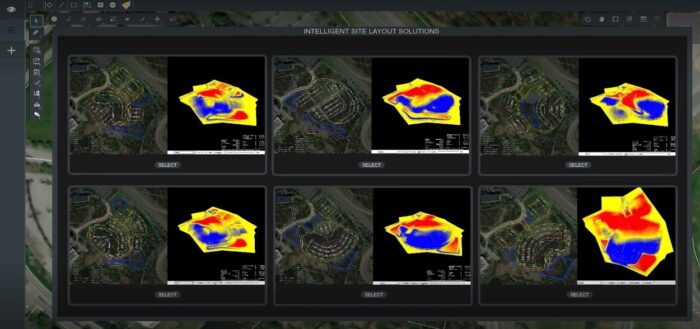 Generative AI capabilities powered by iTwin currently under development include an AI agent that will assist engineers to optimize site layouts and automate drawing production with fit-for-purpose annotations.
Generative AI capabilities powered by iTwin currently under development include an AI agent that will assist engineers to optimize site layouts and automate drawing production with fit-for-purpose annotations.If you would like to learn more from the discussions that took place at the 2023 Year in Infrastructure, check out CEO Greg Bentley’s keynote and our product and technology keynote, featuring Chief Product Officer Mike Campbell and Chief Technology Officer Julien Moutte on our 2023 Year in Infrastructure Highlight Videos page.






